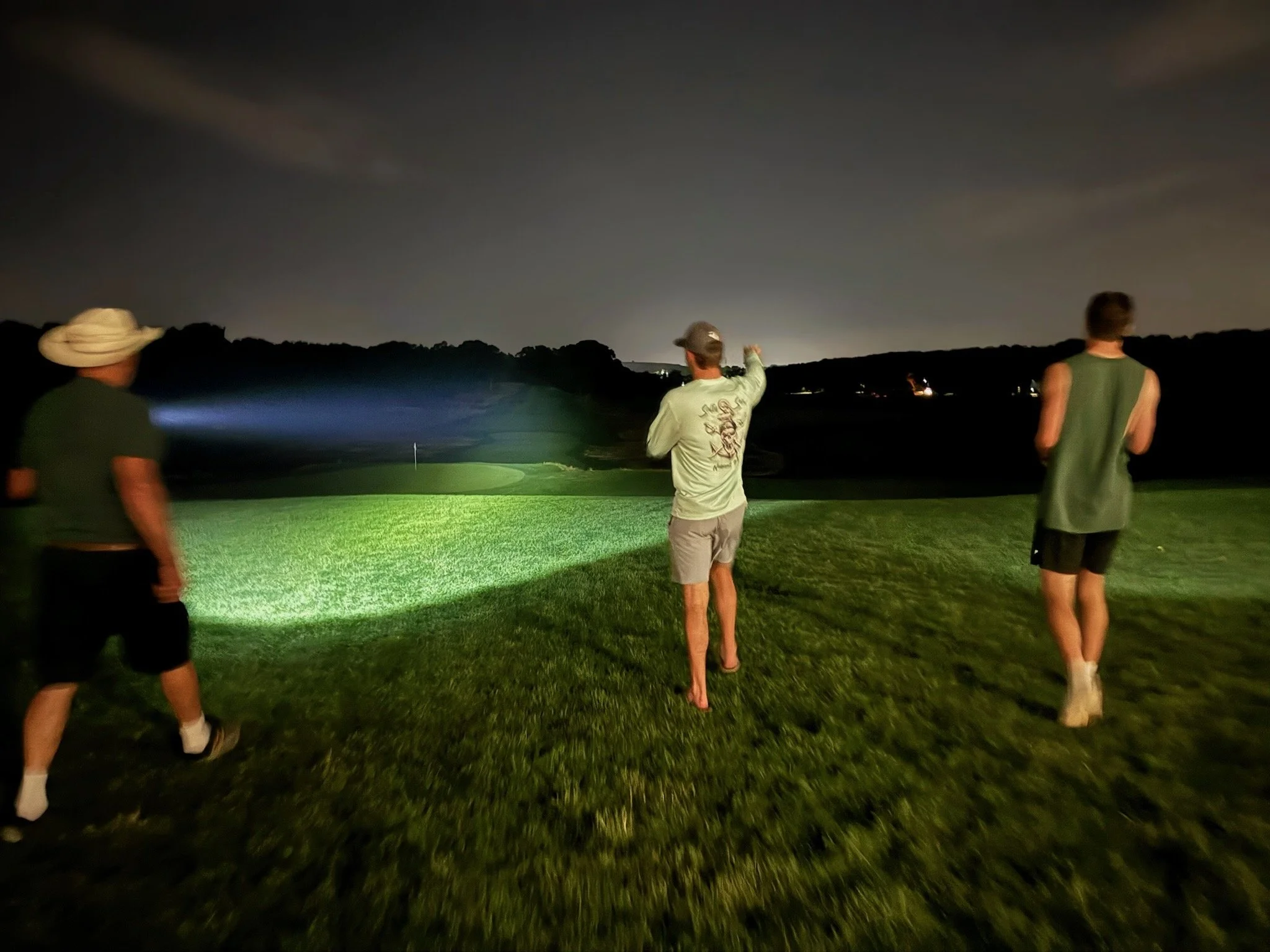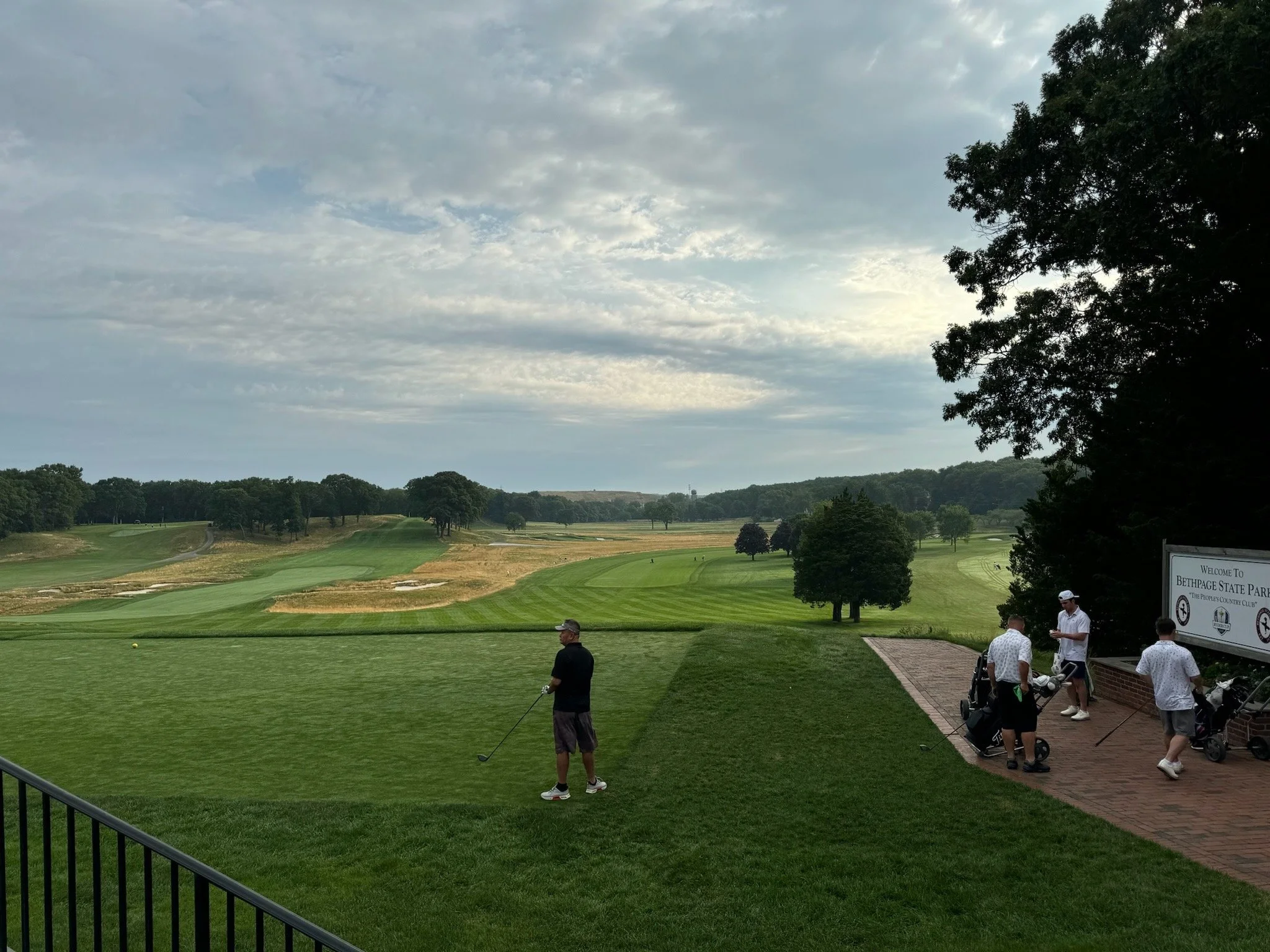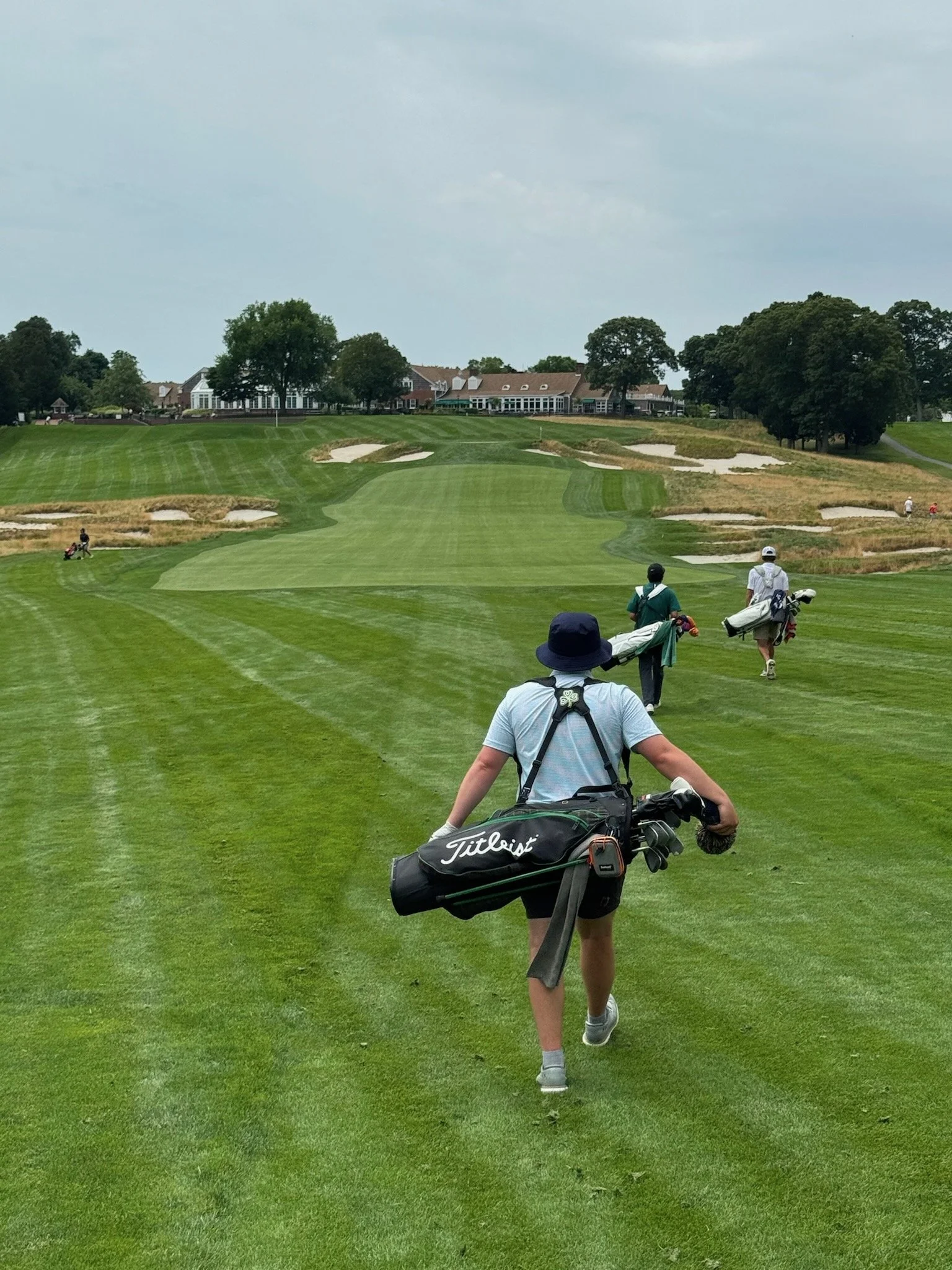Planning a Overnight Golf Trip to Bethpage State Park
Bethpage State Park, nestled in Farmingdale, Long Island, is more than just a cluster of golf courses — it's a symbol of democratic golf in America. Established in 1931 during the throes of the Great Depression, Bethpage was born from New Deal ambition and working-class grit. Designed as a public recreational haven, the park became a national treasure when it opened five 18-hole courses to the public — most notably the legendary Black Course.
The original layout incorporated the old Lenox Hills Country Club, but it was architect A.W. Tillinghast, commissioned by the WPA (Works Progress Administration), who would reshape the property’s destiny. Tillinghast created three of the courses — the Black, Red, and Blue — with the Black Course becoming the crown jewel: a brutally honest test of golf that was never intended for the faint of heart.
Bethpage Black is perhaps the most famous municipal golf course in the world. Its intimidating sign — “Warning: The Black Course is an extremely difficult course which we recommend only for highly skilled golfers” — has become part of American golf folklore. More than that, the park hasn’t forgotten its original purpose of giving great golf to the public. While no membership barrier exists for courses like Pebble Beach, Pinehurst, and TPC Sawgrass, a financial barrier stands to put these out of reach for some. The most expensive course on the property at Bethpage is the Black coming in at $160 for a weekend tee time for an out-of-stater. For New York residents the most they’ll ever pay for access is $80. In state juniors can pay as little as $15 during certain times for the Blue, Yellow, or Green courses.
Today, Bethpage is a proving ground, a pilgrimage site, and a symbol of the sport’s accessibility. New York residents can book tee times 7 days in advance, while non-residents can book 5 days in advance. However, for many reasons and as covered extensively (and is a very well produced podcast) by No Laying Up, actually securing a tee time can be a challenge. (Link to episode). This results in one of the best ways of getting on Bethpage Black or Red being through their overnight camping queue. Even if you can secure a tee time through the online portal, I highly recommend the overnight queue to every golf junkie to try at least once. It can seem a little confusing at first since it’s relatively unique in the world of golf, and thus this guide seeks to lay out the process to ensure a smooth trip.
The Overnight Grind: Sleeping in the Parking Lot





There’s no hotel here. You sleep in your car or you bring a tent you can set up on a strip of grass next to it. It’s hard to say when the best time to arrive is but it largely depends on which course your planning to play. If you want a surefire round on the Black you should go early - like parked in a spot at 3-5pm early. Holidays and weekends will be much busier and thus the earlier the better. Locals show up closer to 4am when the tickets are handed out because they can just drive down the road and they usually aren’t looking for another date with the Black course which can be a bit of a toxic partner.
Make sure you have your state issued ID. For sustenance make sure you bring snacks and bring beer. Bring a lawn chair and a cooler. Bring portable chargers. Some bring tricked out vans or RVs. Our go to move is to rely on delivery apps for dinner while the cooler space is reserved for beer. Pizza from Bonilla’s through UberEats always hits. There’s a bathroom onsite. You can rent lockers for a small fee during the day that will give you access to the locker room and a shower.
They say you need to back into your parking spot but not everyone does. You still should absolutely do it because once your ticket is handed to you, you drive to the clubhouse to actually exchange your ticket and payment for a tee time. Your neighbors will be standing in front of their cars and you don’t want to get stuck trying to back out into a mob of people. Once you're parked, it’s very easy to make friends with the people parked around you. It takes a certain type of person to get a couple hours of sleep in their car just so they can have a shot at playing a public golf course. But besides the joy of making new friends, it also comes in handy to have someone knock on your window when you're sleeping through your alarm.
Once the worker comes to the parking lot with their golden tickets, you’ll know it. You stand next to your car to prove that yes you really did sleep there for the bakery ticket and the worker gives you a numbered ticket. You then get in your car and drive to the pro shop where you get in line to have your number called so you can purchase a ticket. This is where you will need to show ID. The first 6-12 tee times (depending on the season) at each course are reserved for the lunatics that waited overnight. After that, each hour one slot is reserved for day of arrivals. If you feel worried that the process seems confusing and you don’t know what you're doing, there will be locals and experienced willing to help out. All you need to do is make sure you get your car in a numbered spot. The parking lot is well marked.
Another tip. If you can’t sleep or weren’t even planning on it, you can walk through the parking lot to the club house in the middle of the night, knock on the door and ask the security guard for a tour. Often times, they want to. They’ll take you through each room, the locker rooms, the old bars, and tell stories about how the course was built, how it’s maintained, and how Tiger won his second U.S. Open here in 2002.
Once the formalities are out of the way, you’ll most likely have time to drive somewhere for breakfast before you return. There is a range, but its old mats and to short for driver, a fitting reminder that your at a muni and not Shinnecock.
The Courses: Five Flavors of Punishment and Pleasure
Bethpage isn’t just the Black Course. It’s a whole complex—five 18-hole public layouts carved into the rolling hills of central Long Island by A.W. Tillinghast and his WPA-era work crews. Each has its own mood, like siblings raised in the same house but forged by different lives.




Black Course
“The Black Course is an extremely difficult course which we recommend only for highly skilled golfers.”
That’s the sign that greets you at the first tee. It’s not marketing hype—it’s a warning. The Black at Bethpage was always meant to be hard - hard to play, hard to walk, and hard to forget. Fairways run narrow like alleyways in Brooklyn, bunkers are the size of Staten Island, and the greens are slicker than the ice the Islanders skate on. You’ll be on little sleep, probably stiff from laying on your car seat, and you have to walk every bit of undulation. It hosted the U.S. Open in 2002 (won by Tiger Woods) and 2009 (won by Lucas Glover), the PGA Championship in 2019 (won by Brooks Koepka), and the Ryder Cup in 2025.
Pars here are earned. You can take on the championship test and play from the tips at over 7,450 yards with a course rating of 77.5 and a slope of 155 or you can play at a still highly respectable 6,700 yards from the white tees. Make sure your golf shoes are good for walking and waterproof, try to salvage something on the range beforehand, but most importantly just enjoy the opportunity.
Red Course
Designed by A.W. Tillinghast in 1935 and later refined, the Red doesn’t get the TV cameras or the U.S. Open crowds, but for New York’s serious public golfers, it’s often the best blend of challenge, playability, and architectural intrigue in the park. My first time there I was shocked about the amount of people in low numbered spots that had come for the Red. It was arguably the most popular choice among people I talked to.
The Red punches above its weight class. It stretches over 7,100 yards from the tips and demands precision, strategy, and a bit of swagger. From the first tee—tucked beside the Black’s starter booth, but without the warning sign—you’re thrown into a round that wastes no time. The opening par 4 is a downhill beauty, but the real teeth come in the middle stretch. Holes like the par-5 13th and the long, bunker-laced par-4 15th are pure Tillinghast: bold off the tee, unforgiving if you're out of position, and thrilling when executed right. but it It’s tough, strategic, and walkable. That being said, unlike the Black you can take carts if you so chose, which adds to its playability.
Blue Course
The Blue Course flows through the eastern edges of the park, away from the Black’s brutality but still offering a solid challenge. With wide fairways, generous landing zones, and less punishing rough, it’s far more playable for the average golfer. But don’t be lulled into complacency. Elevation changes, strategic bunkering, and firm greens keep you on your toes. The opening hole is a welcoming handshake, but by the back nine—especially holes 11 through 13, which flirt with some dramatic land movement—you’re reminded that this is still a Tillinghast-influenced layout.
In the modern rotation, the Blue is a go-to for locals looking for a brisk, satisfying round without the masochism of the Black. For many, it’s the course that introduced them to Bethpage—and for others, it’s the ideal encore after testing their limits on its more famous sibling.
White Course
The White Course at Bethpage State Park isn’t going to change your life—or your handicap—but it just might save your weekend round. Originally opened in 1958, the White is the quietest of Bethpage’s five 18-hole layouts.
It’s the easiest walk in the park—literally—playing shorter and flatter than its siblings. With wide fairways, minimal rough, and gentle greens, the White is about as user-friendly as Bethpage gets. It’s the go-to track for beginners, casual foursomes, or anyone looking to get around in under four hours without needing to ice their knees afterward.
Architecturally, it’s competent but uninspired. You won’t find the bold bunkering of the Black, the strategic nuance of the Red, or the quirky charm of the Yellow. The holes tend to blend together—a steady diet of mid-length par 4s, straightforward par 3s, and reachable par 5s with few memorable features. The back nine offers a little more movement in the terrain, and there are glimpses of elegance in holes like the short par-4 13th, but overall, it’s golf on cruise control.
That said, the White serves an important role. It relieves pressure on the other courses. It keeps the tee sheet full and accessible. And on a busy summer afternoon, when the Black is booked and the Red’s got a three-hour wait, the White gives you a shot at fresh air, solid turf, and a satisfying walk through the trees. Sometimes that’s all a public course needs to be.
Yellow Course
Yellow plays around 6,300 yards from the tips and offers the widest fairways in the park, with minimal rough and mostly flat terrain. It’s a fast round, a light carry, and one of the best courses on Long Island to walk. But don’t let its friendliness fool you—Tull sprinkled in just enough challenge to keep you honest. Several doglegs require thoughtful tee shots, and the greens, while smaller than average, can be tricky if you miss your approach. Hole 18 is a solid finisher, with a narrow corridor forcing one last accurate swing before you grab a beer at the clubhouse.
Green Course
The Green Course at Bethpage is the original. The first. The one that started it all back in 1923—well before Tillinghast shaped the Black and Red into legends. But despite its age and historical significance, the Green has largely faded into the background. It’s the shortest, softest, and most stripped-down of the five full courses in the park. For most, it’s a footnote. For others, it’s a warm-up. For some, it’s exactly what they need.
Final Thoughts
The parking lot at Bethpage is a ritual—a rite of passage in golf’s blue-collar cathedral. It’s golf in its rawest, most democratic form.
It hurts. It humbles. And like all great journeys, it stays with you long after the scorecard is tossed in the back seat. Championship golf, no country club membership required.
